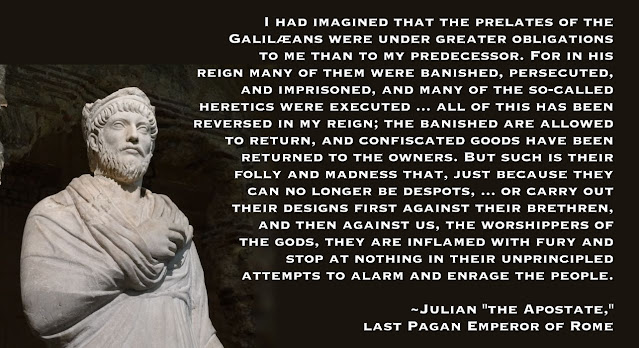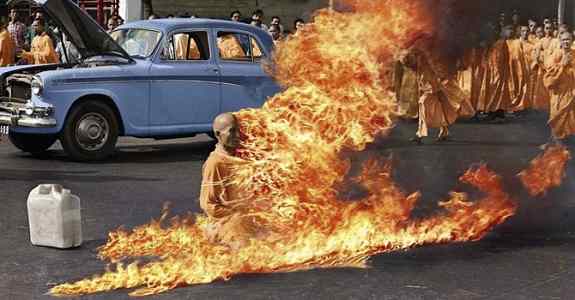The Limitations of an Analogy: Late Republic or Late Empire?
Tiberius’ re-election bid “presented the Scipionic group with an issue to use against their political enemies”; at the electoral comitia counting the votes for the tribunes for 132 BC, Tiberius and his entourage were attacked by a mob led by his first cousin Publius Cornelius Scipio Nasica, the pontifex maximus. Scipio Nasica first attempted to get consul Publius Mucius Scaevola to kill Gracchus during a senate meeting on Gracchus’ imminent re-election; when the consul refused, saying he would not use force or kill a citizen without trial, Scipio Nasica shouted a formula for levying soldiers in an emergency—“anyone who wants the community secure, follow me”—and led a mob to the comitia with his toga drawn over his head. In doing so, he attempted to enact an “ancient religious ritual killing (consecratio) … presumably on the grounds that [Gracchus] was trying to seize power and overthrow the existing republic.” Tiberius and his supporters fell without resistance; slain by stones and other blunt weapons, their bodies were thrown into the Tiber. This opposition was political: Gracchus’ land reforms “may have been acceptable,” but not when combined with his seeming threats “to make the urban populace and the small peasants his personal clientelae.” —from the Wikipedia article on Tiberius Gracchus
More than once in this blog I have compared the USA to ancient Rome—to both the Republic and the later Empire. I would guess that, assuming rebirth to be a fact, a great many Americans had previous existences as inhabitants of the Roman state. (Edgar Cayce also declared that many Americans were Roman in at least one previous life, though I suppose that's hardly conclusive evidence.) There are many resemblances between ancient Rome and modern America, including the Decline and Fall aspects which are becoming more obvious by the year; and so I would venture to say that American society is a kind of reincarnation of Roman society.
Some scholars, like Sir John Glubb in his famous essay “The Fate of Empires,” have divided the history of ancient Rome into two separate “empires,” the Republic and the Empire proper, and some use this to help account for the fact that Rome’s greatness lasted about twice as long as most famous great powers such as Persia, the Arabian Empire, colonialist Spain, and the Ottoman Empire. This might help to compare America with Rome, as there are two Romes which overlap to some degree, and America, going with the analogy, could represent a condensed modern version of both simultaneously. But still it is hard to say at this point which Rome present-day America more closely resembles. The only thing that is clear is that America today resembles both versions of Rome when they were near collapse, or at least in the Decline stage.
Lately, with the continued relentless persecution of Donald Trump, obviously motivated by nothing but cutthroat politics, we appear to be in the early stages of the civil war phase of the late American Republic. This period began for Rome very shortly after the end of the Punic Wars, a war for survival and dominance between Rome and Carthage. Our semi-equivalent to this began shortly after the Cold War, our struggle for survival and dominance with Soviet Russia. Apparently struggles for survival against an obvious foreign enemy tends to unify a nation, and when that struggle ceases the forces of chaos and decay can be unleashed with a vengeance. The Punic Wars ended in 146 BC.
A notable early event in this period for Rome was the rise and assassination of the Gracchi brothers Tiberius and Gaius, who died in 133 BCE and 121 BCE respectively. They were populist reformers who were seen as a threat to the senatorial class, and the elder was murdered in the street, as described in the opening quote to this essay. Gaius, who attempted to further his elder brother’s work as Tribune (official defender of the rights of the lower classes), had martial law declared against him, and he died under siege in a temple of Diana, with the city militia and some Cretan mercenaries offered the weight of his head in gold.
Possibly the next famous stage in the collapse of the Roman Republic was the rise of Gaius Marius, uncle of Julius Caesar. He also was a populist reformer who fell afoul of the senatorial ruling class, although he himself was a member of it. Although immensely popular with the masses he was opposed by many Patricians, and political misfortunes, including a revolt of several Italian states in the early 90s BCE, caused him to become vulnerable politically. Eventually a more “conservative” Patrician general, Sulla, essentially invaded Italy with his legions, drove Marius into exile, purged/killed most of his closest relatives and supporters (with a young Julius Caesar surviving only because he was a child at the time), and eventually culminating in a reverse, with Marius coming out of exile with his own army and purging in return the supporters of Sulla. Rome was in severe distress during these times, partly because so many of the rulers of both factions had been murdered by their opponents. All this set the stage for the first Triumvirate and the “permanent” dictatorship of Julius Caesar, and after the civil war following his assassination, the end of the Republic and the first Emperor, Caesar’s nephew and adopted son Octavianus, better known as Augustus Caesar.
So the increasingly brazen and shameless persecutions of Republicans by the increasingly reckless and Marxist Democrats, especially with regard to Donald Trump, a former President and the current Republican frontrunner for the Presidency, certainly does remind one of the increasingly brazen and violent assassinations and purges of the late Roman Republic. But we are living in less brutal times, and the persecutors are rather decadent and effeminate, and so we may never reach the level of bloodshed the Romans endured. Now the purges are conducted through economic punishments and politicized show trials.
Also, despite the mass die-off of politicians in those ancient days, Rome was still in a state of vigorous expansion and elemental vitality. It was during these same decades that Rome grew from mainly an Italian nation to an empire comprising most of western and southern Europe, western Asia, and most of northern Africa. America clearly does NOT resemble Rome in this respect, as we are clearly in severe decline militarily, depending not on mercenaries like the late Empire did, but on soft, “woke” indoctrinated zoomers using advanced technology. The disastrous fiasco of the withdrawal from Afghanistan, with the Biden administration lying their arses off and calling it a “brilliant success,” is indicative of our current state of military power. Let alone the fact that our Commander in Chief is a feeble, senile old man who fondles children, doesn’t even know what state he’s in half the time, and is a laughingstock to our enemies.
So with respect to our decline in vitality and strength, not just the blatantly increasing political corruption and internal strife, we appear already to be in some rough equivalent to the late Empire, say, the latter half of the fourth century, if not later. This was a time of decline mainly in the sense of economic hardship and demoralization of the people, in addition to the occasional civil war or barbarian invasion. Instead of fanatical Christians hating on their own country and traditions and cheering on the fall, now we have fanatical neo-Marxists doing the same, except without a realistic semblance of an actual moral high ground. Our new progressive movement considers certain types of moral degeneracy to be a positive virtue. And I can’t resist repeating Gibbon’s observation, what was apparently common knowledge among historians in his day, that the rise of eunuchs into social prominence is a sure-fire indication of a civilization in severe decline—except now, of course, we call the eunuchs something else, like “non-binary” or “trans.”
Add to this the severe devaluation of the currency and a number of feeble and/or incompetent Emperors (someone like Honorius possibly being a rough equivalent to our Mr. Biden), and a massive influx of foreign “barbarians,” many of whom were granted permission by a thoroughly mediocre Emperor (in this case Valens) to settle “peacefully” on Roman territory, and a growing menace sweeping westwards from the general area of China (the Roman version being called Huns), and it may be that the USA has pretty much skipped over the intermediate stages and gone from healthy Republic to Decline and Fall of the Empire. There was a Pax Americana I suppose, named after the Pax Romanum of the time of the competent and conscientious emperors from Nerva to Marcus Aurelius, and America didn’t have to wait for military dictatorship to become a huge empire and the most powerful nation on earth, but still, it appears we’re not going to last nearly as long as Rome did as a world power. We may still have our Byzantine stage, however, of neo-Marxist (not Christian) dictators ruling a herd of demoralized sheep for a further thousand years, but I’m not looking forward to it.
So with regard to the question of where we are compared to where Rome was, I still have to say that we are superimposed over each of the two phases of our ancient predecessor: we’re entering the political and civil strife of the later Republic, with presumably some moral degeneracy resulting from the fabulous wealth it accrued by conquering enemies like Carthage, but also with the economic decline, demoralization, and feebleness of government and military that caused the eventual collapse of the Latin half of the Empire. It all just goes to show that analogies have their limitations, and that history may not repeat itself, but nevertheless, history is the product of human nature, human nature (denied by the left lately) remains essentially the same, and thus the same themes play themselves out again and again, over the centuries and millennia.








Comments
Post a Comment
Hello, I am now moderating comments, so there will probably be a short delay after a comment is submitted before it is published, if it is published. This does have the advantage, though, that I will notice any new comments to old posts. Comments are welcome, but no spam, please. (Spam may include ANY anonymous comment which has nothing specifically to do with the content of the post.)